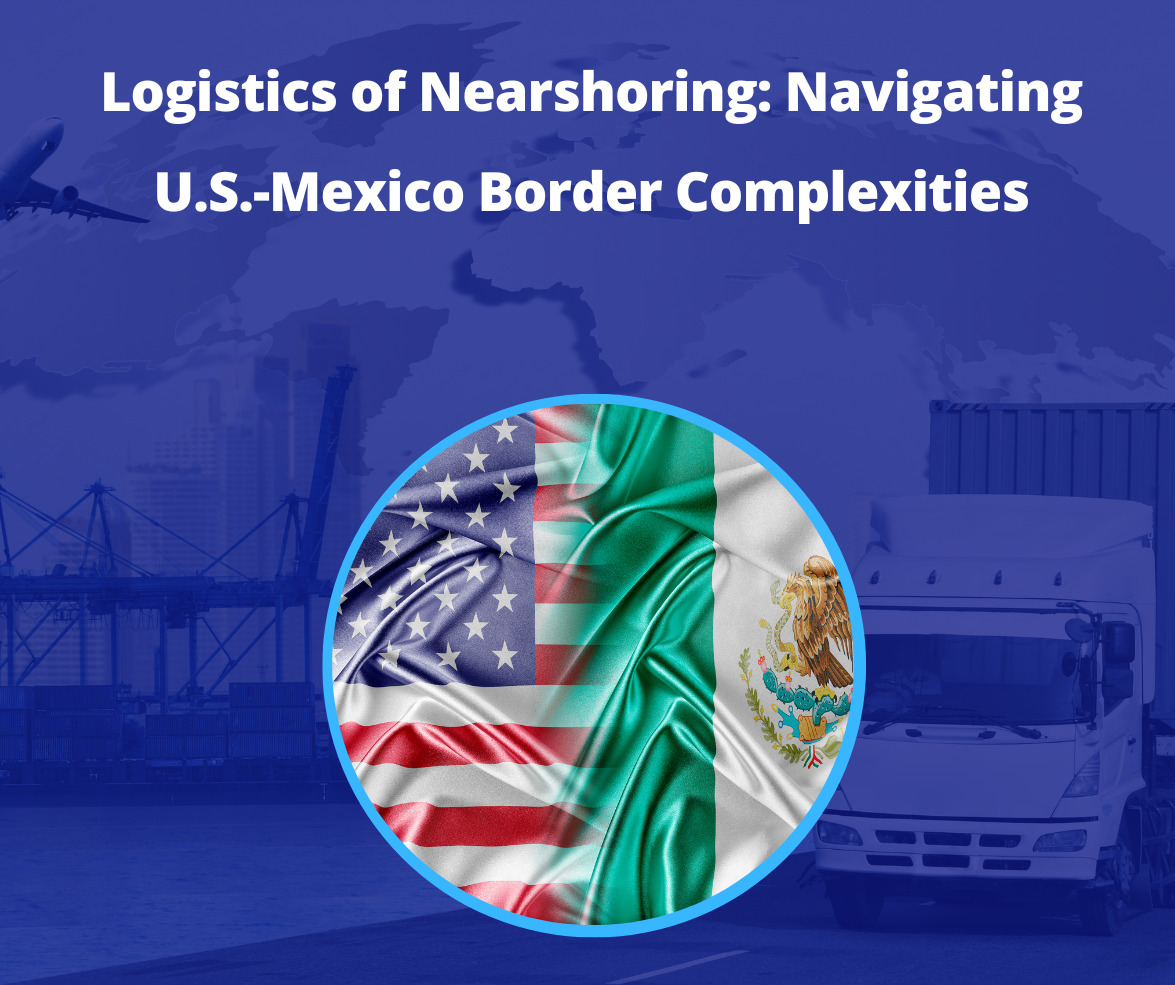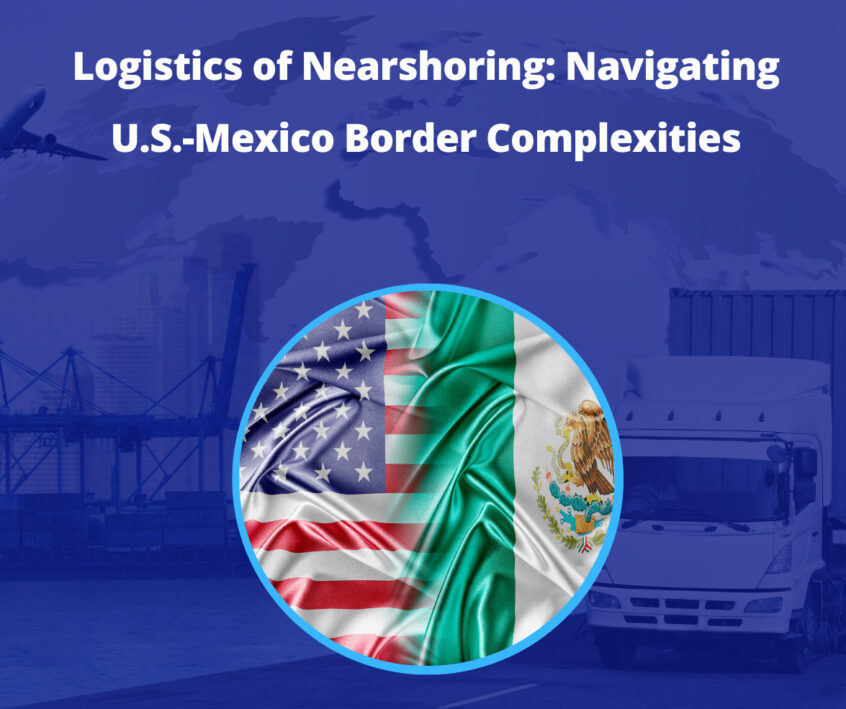
A significant trend in this reshuffled market is the intensified nearshoring activities along the U.S.-Mexico border. This shift has spurred a significant demand for warehousing space, manufacturing facilities, and, critically, transportation capacity capable of servicing these burgeoning hubs. The implications for the logistics industry are profound, requiring a nuanced understanding and innovative approaches to navigate this evolving terrain successfully.
The Nearshoring Phenomenon
The Nearshoring Phenomenon is a strategic shift that has gained momentum, particularly accentuated by multinational corporations moving their operations closer to their primary markets, specifically to the Mexican border regions. This move is primarily driven to enhance supply chain resilience, reduce transportation costs, and achieve a more agile operational model.
The Mexican industrial market, with a size of 908.5 million square feet across various product types, including manufacturing, is witnessing significant growth driven by these nearshoring activities. The first three quarters of 2022 alone saw a historic level of industrial space construction in Mexico, reaching 43 million square feet. This was an increase of 60%, compared to the same period in 2021. A majority of this construction, specifically 65%, is concentrated in cities that are strategically located along the U.S. border, like Mexico City, Monterrey, Ciudad Juárez, and Tijuana, showcasing the direct impact of nearshoring on these regions. This surge in demand and construction is leading to a scenario where, despite the opportunities for market expansion, challenges such as land scarcity could emerge in the future.
Moreover, Mexico’s significant role in the global industrial landscape and its appeal for foreign direct investment are evident. The country is ranked 10th globally in receiving foreign direct investment, with more than $31.6 billion received in 2022 alone. This investment is primarily funneled into the manufacturing sector. The Inter-American Development Bank (IDB) estimates that nearshoring could add $78 billion annually in additional exports of goods and services from Latin America and the Caribbean, with Mexico potentially achieving up to 55% of this total estimate for exported goods. This underscores Mexico’s central position in the nearshoring trend and its potential to reshape North American trade dynamics.
This phenomenon of nearshoring offers numerous benefits in terms of closer geographic proximity and supply chain agility. It also brings to the fore the complex challenges in logistics and transportation logistics. This especially concerns the limited visibility and tracking capabilities of Mexican transportation providers compared to their U.S. counterparts. The reliance on lower-tech communication methods like WhatsApp for tracking updates and load communication highlights the logistical hurdles that need to be overcome to fully leverage the benefits of nearshoring.
Transportation Challenges & Solutions
The transportation challenges between the U.S. and Mexico, particularly regarding carrier visibility and regulatory differences, are significant but manageable. Mexican trucking regulations, as of now, do not mandate the use of Electronic Logging Devices (ELDs), unlike in the United States. This discrepancy creates a visibility challenge, as Mexican carriers often rely on paper logs or digital logbooks to comply with hours-of-service regulations. This effort makes it harder to track their progress.
Companies like Shiplilly are addressing these challenges head-on by offering solutions that enhance visibility and streamline communication. Shiplilly integrates technology with a specialized network of carriers. It employs GPS tracking and full-time monitoring teams to provide end-to-end visibility for cross-border shipments. Their approach underlines the importance of technological innovation paired with deep expertise in cross-border operations to overcome the logistical challenges present in U.S.-Mexico trade.
Moreover, social media messaging apps like WhatsApp play a critical role in communication with drivers and carriers in Latin American markets. Shiplilly leverages technology to centralize and measure these communications effectively. It showcases the adaptability required to manage the unique challenges of Mexican transportation logistics.
Leveraging Social Media for Logistics
Interestingly, the logistical communication landscape in Latin America, including Mexico, heavily relies on social media messaging apps like WhatsApp. This unconventional method serves as a vital channel for updates and load communications, underscoring the importance of flexibility and adaptation in logistics practices. By integrating technology with key ecosystem players, companies can centralize and effectively manage these communications, enhancing operational efficiency.
Building Trustworthy Networks
The emphasis on developing a specialized network of reliable carriers cannot be overstated. Establishing trust and ensuring compliance with safety measures and Customs-Trade Partnership Against Terrorism (CTPAT) regulations is paramount. Unlike the U.S., where a large carrier load board facilitates easy sourcing, the Mexican market demands a more nuanced approach, relying on relationships and a deep understanding of compliance requirements.
Addressing Operational & Visibility Challenges
The operational and visibility challenges inherent in cross-border logistics necessitate a tailored approach that legacy providers may not adequately address. The complexities of cross-border operations—encompassing documentation, appointment booking in multiple languages, and routing considerations—demand a sophisticated and informed strategy. Shiplilly success in reducing border crossing times and document turnaround illustrates the potential of combining in-house technology with sector-specific expertise.
Implications for the Logistics Industry
As nearshoring efforts intensify, the implications for the logistics industry are significant, with a notable impact on the volume of trucks crossing the U.S.-Mexico border. The Bureau of Transportation Statistics’ TransBorder Data Mid-Year Report 2023 outlines the critical role of U.S. land borders with Canada and Mexico in North America’s economic resilience, highlighting that U.S. trade with these neighbors constituted 24% of the total U.S. international trade in 2022. In the same year, U.S.-Mexico freight flows were valued at $1.57 trillion, with a total weight of 654 million tons, underscoring the substantial movement of goods across these borders.
A report by FreightWaves further emphasizes the dominant role of trucking in cross-border freight, noting that trucks carried 71% of all U.S.-Mexico cargo moved in September of a reported year. The significant reliance on trucking for cross-border freight movements, especially with Mexico, points to the increasing demand for efficient, technology-driven solutions to address the complexities of cross-border logistics. Notably, the top cross-border truck commodities included computers and parts, electrical machinery, and motor vehicles and parts, reflecting the diverse and high-value nature of goods being transported.
Given these statistics and the anticipated growth in daily crossings, potentially escalating from nearly 35,000, the logistics industry faces a pivotal moment. The shift toward more transparent, technology-driven solutions is not merely a trend but a necessary evolution to manage the increasing volume and complexity of cross-border freight effectively. The ongoing nearshoring wave, driven by multinational corporations relocating operations to Mexican border regions, underscores the urgent need for the logistics industry to adapt to these changing dynamics.
Wrapping Up
The logistics landscape, particularly along the U.S.-Mexico border, is undergoing a significant transformation, driven by nearshoring trends and compounded by the challenges of the pandemic. The industry’s response—marked by technological innovation, strategic partnerships, and a focus on visibility and communication—paves the way for a more resilient and efficient supply chain. As we look to the future, the lessons learned and strategies employed in navigating these challenges will undoubtedly shape the next evolution of global logistics and supply chain management.



